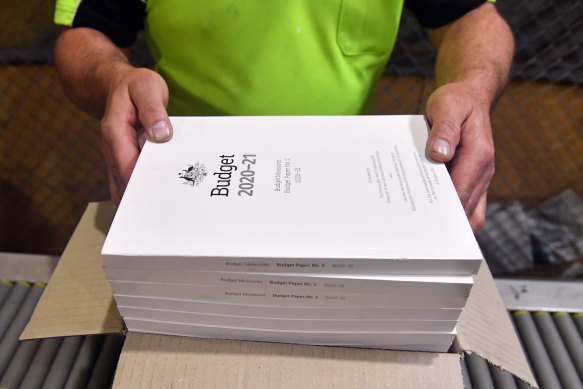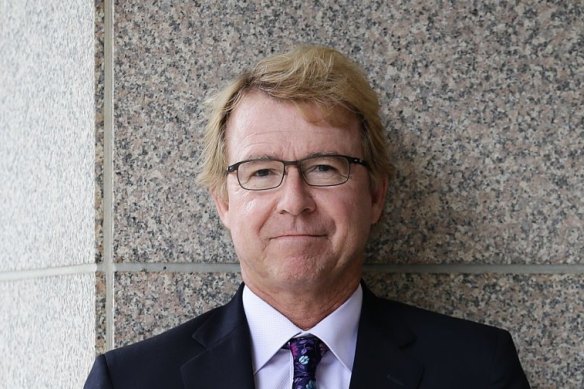- Exclusive
- Politics
- Federal
- Scope survey
This was published 3 years ago
Fix jobs before budget repair: top economists warn of big deficits into 2030s
By Shane Wright and Jennifer Duke
Huge budget deficits will dog every federal government into the 2030s, with the nation’s top economists urging Treasurer Josh Frydenberg to keep spending to help drive down unemployment and get the economy growing faster than it was before the pandemic recession.
The Scope survey of economists by The Sydney Morning Herald and The Age show that on average, they expect the government to preside over a $161 billion deficit in the coming financial year, followed by a $111 billion shortfall in 2022-23.

Some of the nation’s top economists don’t expect a return to surplus this decade, while predicting gross debt to reach $1.4 trillion.
That would follow a $197.7 billion deficit the government is forecasting for the current financial year.
The earliest any Scope economist expects the budget to get to surplus is 2025, but many believe it will not return to the black until the early 2030s. In its mid-year budget update, the Treasury projected deficits would be a feature of the nation’s finances at least to 2030-31.
The sea of red ink will lead to an explosion in gross debt.
The government expects gross debt to reach $1.1 trillion early in the 2030s. It is currently $813 billion.
But Scope economists believe the debt burden eventually left by the pandemic recession will be even larger. Across all forecasters, the average is for it to reach $1.4 trillion.
Commonwealth Bank’s head of Australian economics, Gareth Aird, said there was no evidence the budget would return to surplus.
He said this was not necessarily a problem, adding the government should keep its attention on getting people back into work and the economy growing quickly.
“The focus should be on growing the economy at this stage and not budget repair – even if the unemployment rate is lower than 6 per cent,” he said. “There is a risk that if budget repair begins too early, and with the RBA unable to cut the cash rate further, the recovery could stall.”
AMP Capital chief economist Shane Oliver said even if the government engaged in a budget repair program, such as that attempted after the global financial crisis, a surplus was unlikely until 2031.
He said budget repair would likely start in 2022-23 but it would be a slow grind back to budget black.
“It should focus on making sure that expenditure in areas that was boosted in response to the pandemic is wound back to its pre-pandemic trend,” he said.
“A return to surplus is ideal in order to provide budget flexibility to respond to future threats to the economic outlook.”

AMP chief economist Shane Oliver says the budget is unlikely to reach surplus until 2031. Credit: Louie Douvis
HSBC Australia chief economist Paul Bloxham, who is tipping a $220 billion deficit in 2021-22 to be followed by a $110 billion shortfall, said it would be many years before a surplus would arrive.
“The main focus for fiscal policy should be in delivering the required support to get the jobs market back to full employment. Fiscal consolidation should only come into focus when that primary objective has been achieved,” he said.
Deputy director of the Bankwest Curtin Economics Centre, Rebecca Cassells, said simply focusing on the budget bottom line was a mistake given the issues facing the country.
“We should be measuring the number of quality jobs created each year, the health and wellbeing of the population and how much we are investing in future generations and protecting our environment. Focusing on whether we have a surplus or deficit every year moves us away from what really matters,” she said.
Industry Super chief economist Stephen Anthony said while the pandemic had hurt the budget, the medium-term deterioration of the budget had been hidden by the temporary lift in iron ore prices.
He said the government might have to put in place even more stimulus in coming months and years.
“There may be a need to reconsider fiscal strategy to engage in a more aggressive public infrastructure building program.”